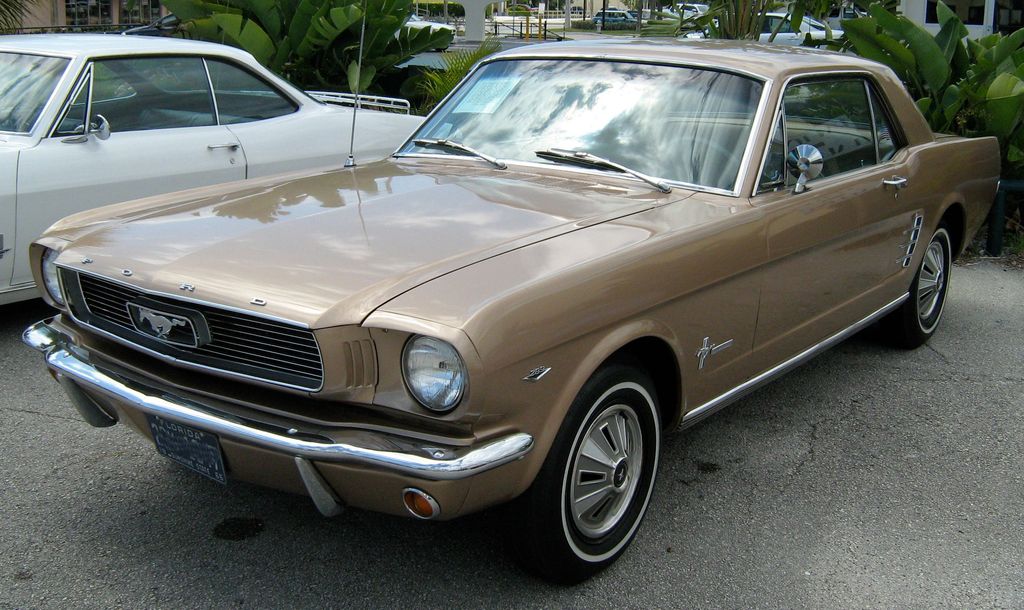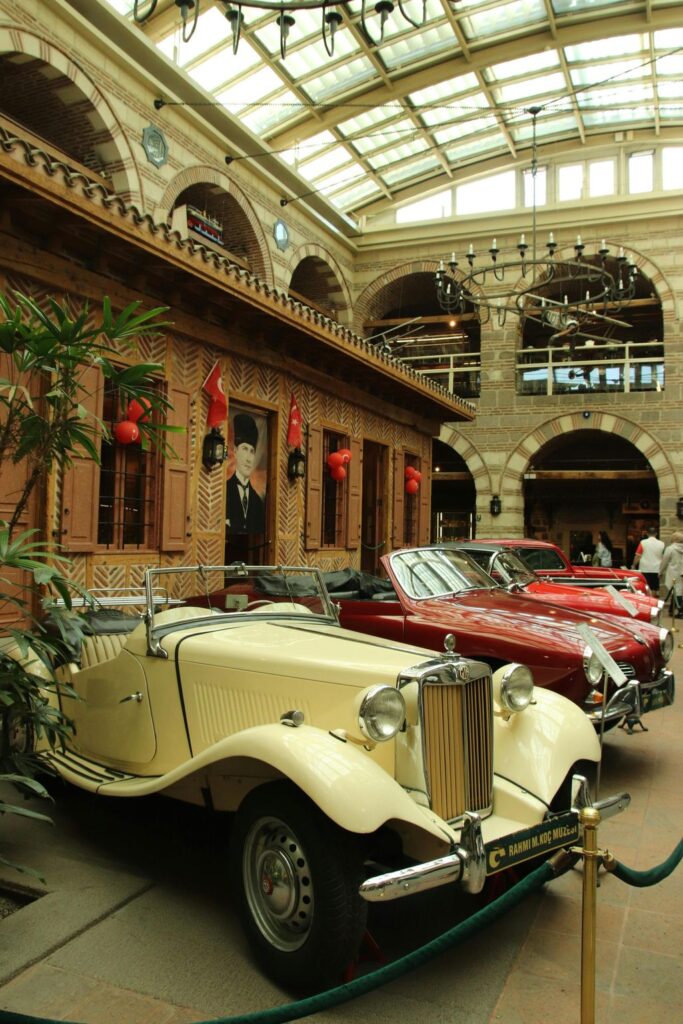
The world of classic cars is a fascinating landscape, rich with history and design evolution. What one generation cherishes as an icon of automotive prowess, another might view with a shrug or a critical eye. This isn’t just about old versus new; it’s a deep dive into shifting values, technological advancements, and the personal experiences that shape our perceptions of what makes a “cool ride.” It’s a truly dynamic interplay of nostalgia and modern sensibilities that continually reshapes our automotive desires.
For decades, Baby Boomers, born between 1946 and 1964, have been the undisputed driving force behind the classic car market. Their formative years coincided with what many consider the “golden age of American automotive design,” a period brimming with gleaming chrome, flamboyant tail fins, and the exhilarating rise of high horsepower. These were the aspirational machines of their youth, vehicles deeply connected to their memories and the cultural landscape of a vibrant post-war America. Boomers are, quite simply, “deeply connected to cars from the era of chrome, tail fins, and high horsepower.” This deep connection ensures a lasting legacy for these cherished models among their original admirers.
However, as Millennials, born between 1981 and 1996, ascend in purchasing power and carve out their own automotive passions, their preferences are proving markedly different. Their era leans heavily towards the 1980s and 1990s, often referred to as the “JDM Era” and the birth of “Modern Classics.” Here, performance, distinctive style, and reliable engineering often came packaged in more compact, technologically advanced forms. This generation’s tastes, heavily influenced by import tuner culture, video games, and pop culture, often diverge sharply from their predecessors. So, when it comes to many of the once-revered Boomer classics, there’s often a significant disconnect. Let’s peel back the layers and understand why some of these iconic machines just don’t click with the younger crowd.
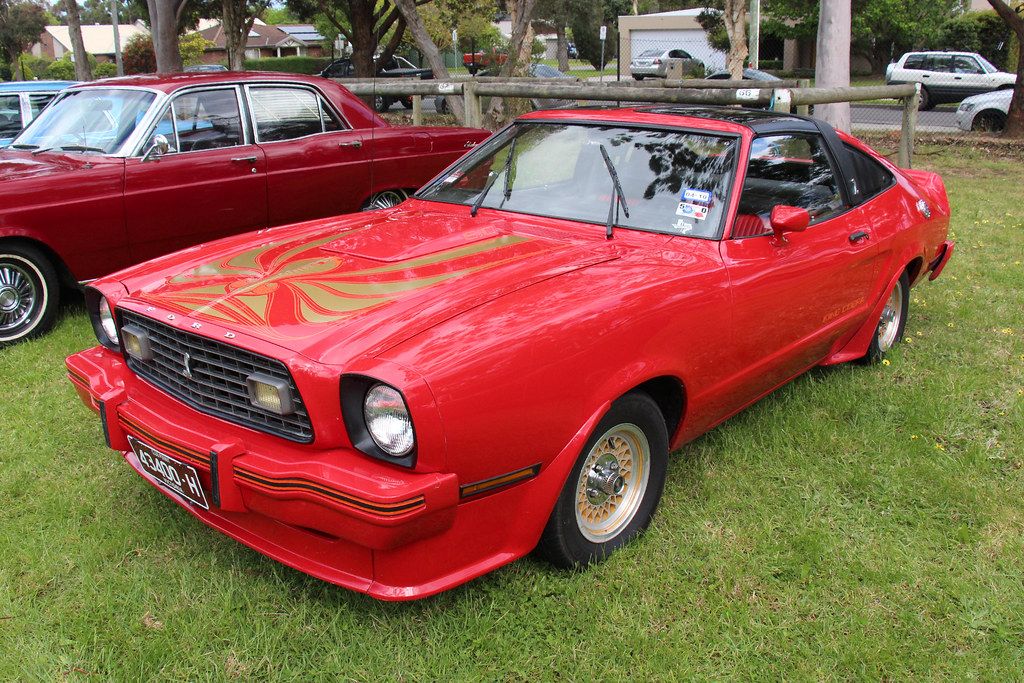
1. **Ford Mustang II**Boomers may hold a distinct “soft spot for the Ford Mustang II,” viewing it with affection as a resilient continuation of the Mustang lineage during the challenging fuel crisis era. For them, it symbolized adaptability and the enduring spirit of an iconic American brand, even if it was a significant departure from its powerful predecessors. It responded directly to the economic realities of its time, providing a more compact and fuel-efficient option, which was a practical advantage in its day.
Millennials, however, do not share this nostalgia. They “criticize it for straying too far from its roots,” offering what they perceive as underwhelming performance and a frankly bland design. When they hear “Mustang,” they envision roaring engines, sleek, aggressive lines, and a powerful presence—qualities they simply do not associate with the Mustang II. It’s often seen as a dilution of the brand’s true identity, a less exciting chapter that doesn’t resonate with their preference for dynamic aesthetics and uncompromised performance.
The Mustang II represents a design and performance compromise that simply doesn’t align with younger generations’ expectations for a vehicle carrying such a storied nameplate. Millennials are looking for the visceral thrill of a powerful engine and a visually arresting aesthetic, not a car that scaled back its ambitions during an oil crisis. This divergence perfectly encapsulates the generational gap in automotive appreciation.
Car Model Information: 2021 Jeep Grand Cherokee Laredo X
Name: Second generation
Caption: Ford Mustang II coupe
Aka: Ford Mustang II , Ford T5 (in Germany)
Class: Pony car,Subcompact car
Production: 1973–1978
ModelYears: 1974–1978
Predecessor: Ford Mustang (first generation)
Successor: Ford Mustang (third generation)
Assembly: Unbulleted list
Layout: Front-engine, rear-wheel-drive layout
BodyStyle: coupé,hatchback
Related: Ford Pinto,Ford Pinto
Manufacturer: Ford Motor Company
Engine: ubl
Transmission: ubl
Wheelbase: cvt
Length: cvt
Width: cvt
Height: cvt
Designer: Buck Mook, Dick Nesbitt
Categories: All articles with dead external links, All articles with unsourced statements, Articles with dead external links from April 2024, Articles with permanently dead external links, Articles with short description
Summary: The second-generation Ford Mustang, marketed as the Ford Mustang II, is a two- or three-door, four-passenger, front-engine/rear-drive pony car manufactured and marketed by Ford from 1973 until 1978. Introduced in September 1973 for the 1974 model year, the Mustang II arrived roughly coincident with the oil embargo of 1973 and subsequent fuel shortages. Developed under Lee Iacocca, it was an “entirely new kind of pony car.” Ford “decided to call it Mustang II, since it was a new type of pony car designed for an era of high gas prices and fuel shortages.”
The Mustang II was 490 lb (222 kg) lighter and almost 19 in (483 mm) shorter than the 1973 Mustang, and derived from the subcompact Pinto platform. While sharing a limited number of driveline components with the Pinto, the Mustang II employed an exclusive subframe, isolating its front suspension and engine mount subframe. The steering used a rack-and-pinion design.
Named Motor Trend’s 1974 Car of the Year and reaching over 1.1 million sales over four years of production, the Mustang II is noted simultaneously for both its marketing prescience and strong sales – while criticized as having abandoned essential aspects of the Mustang heritage and described, in a retrospective after 40 years since its introduction, as embodying the Malaise era.
Get more information about: Ford Mustang (second generation)
Buying a high-performing used car >>>
Brand: Ford Model: Mustang II
Price: $27,316 Mileage: 34,523 mi.
Read more about: Boomer Dream Machines: 14 Classic Car Icons Millennials Are Overlooking and Why They’re Missing the Mark
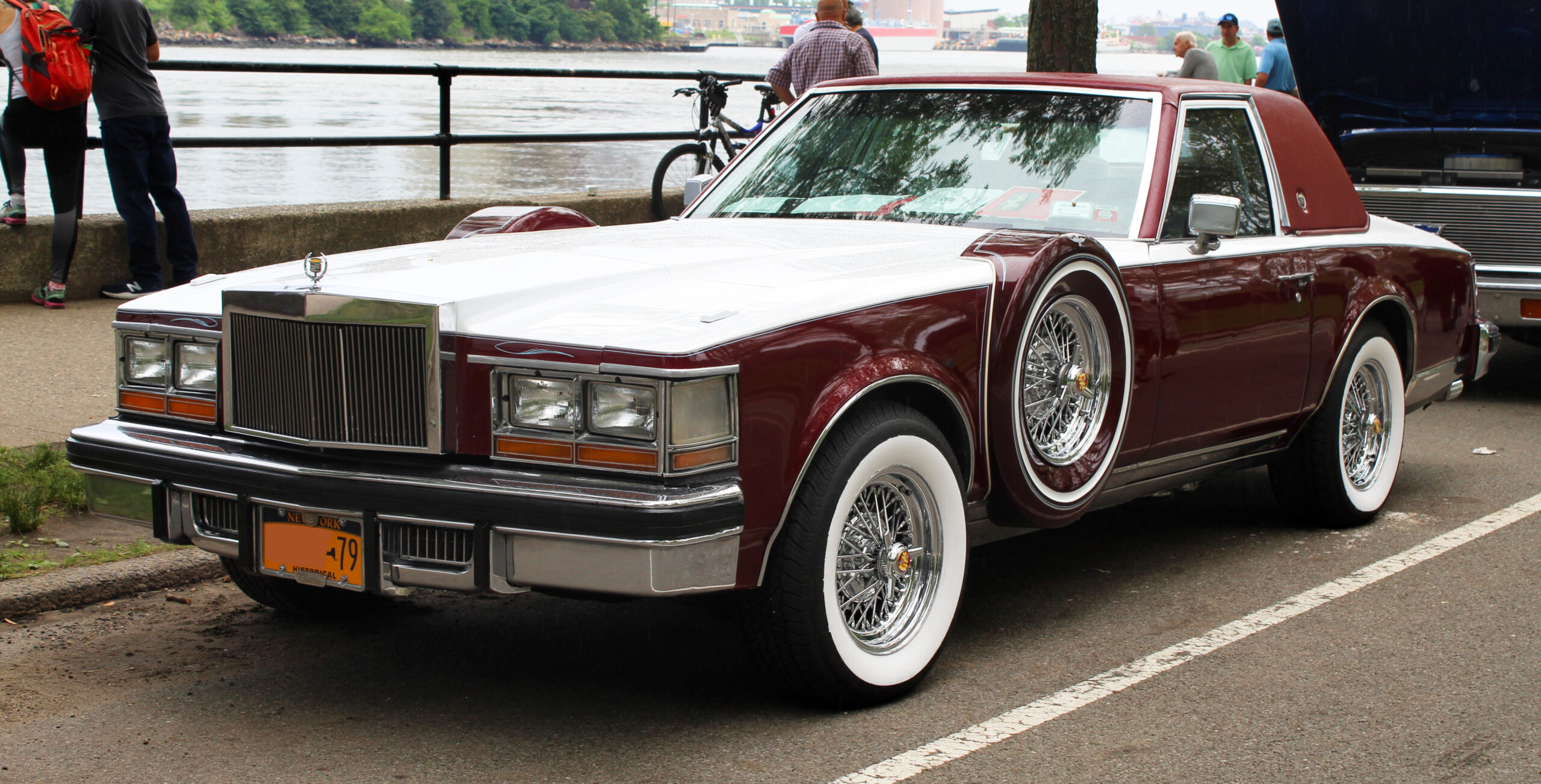
2. **Cadillac Seville**For Baby Boomers, the Cadillac Seville often evokes fond memories of a “premium American sedan” that truly offered an unparalleled blend of comfort and style in its heyday. It was more than just a car; it was a definitive statement vehicle, reflecting a certain level of success, sophistication, and luxury. Its smooth, quiet ride and undeniably grand presence on the road were benchmarks of automotive opulence, a symbol of American luxury at its peak.
Millennials, however, perceive the Seville through a very different lens, one shaped by modern values and priorities. They “view the Seville as emblematic of the excesses of past American automotive design,” critiquing its generously large body and what they consider significant “fuel inefficiency.” Their contemporary values lean strongly towards smaller, more economical, and increasingly environmentally conscious vehicles. The Seville’s opulent dimensions and thirsty engine simply do not fit comfortably into their modern worldview, making it appear not just outdated, but impractical.
The “generational shift towards smaller, more economical vehicles” is perhaps the most critical factor in this perception gap. What was once celebrated as a symbol of prestige and comfort for Boomers has, for Millennials, become a clear representation of automotive indulgence from a bygone era. This specific car vividly illustrates how evolving societal values can fundamentally redefine what’s considered desirable or even acceptable in a vehicle today.
Car Model Information: 1999 Cadillac Seville Base
Name: Cadillac Seville
Caption: 1998–2004 Cadillac Seville
Manufacturer: Cadillac
Production: 1975–2003
ModelYears: 1976–2004
Class: luxury car
Layout: FR layout
Predecessor: Cadillac Calais
Successor: Cadillac STS
Categories: 1980s cars, 1990s cars, All articles with unsourced statements, Articles with short description, Articles with unsourced statements from October 2016
Summary: The Cadillac Seville is a mid-size luxury car manufactured by Cadillac from the 1976 to 2004 model years as a smaller-sized, premium model. It was replaced by the STS in 2004 for the 2005 model year.
Get more information about: Cadillac Seville
Buying a high-performing used car >>>
Brand: Cadillac Model: Seville
Price: $19,900 Mileage: 36,875 mi.
Read more about: Unpacking the Generational Divide: 14 Classic Boomer Cars Millennials Just Aren’t Craving – And Why
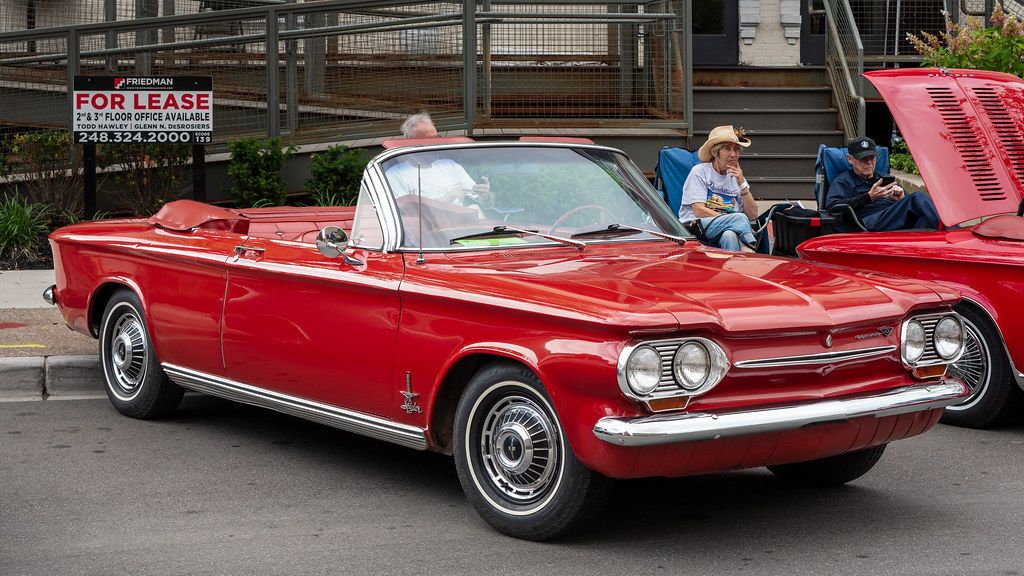
3. **Chevrolet Corvair**The Chevrolet Corvair holds a particularly unique, if somewhat controversial, place in automotive history, especially for Boomers. Many were initially captivated by its “rear-mounted air-cooled engine and innovative design” when it first appeared. It was a car that dared to be different, offering a distinct and European-inspired alternative to the more conventional American vehicles of its time. Its engineering approach was considered cutting-edge for the era, a genuine marvel of its period.
However, this early innovative spirit is often heavily overshadowed by later criticisms and safety concerns, especially when viewed by Millennials. Younger drivers “often criticize it for its handling issues and safety concerns, making it less desirable among younger enthusiasts.” The controversies surrounding the Corvair’s safety, famously brought to the forefront by Ralph Nader’s groundbreaking book “Unsafe at Any Speed,” have cast a long shadow. This historical narrative shapes a lasting negative perception that largely outweighs any potential appreciation for its original design boldness.
While Boomers might vividly recall the excitement of its unique engineering, Millennials are, perhaps understandably, more informed by its historical drawbacks and the persistent legacy of safety criticisms. This stark contrast highlights how past controversies can permanently color a vehicle’s appeal. For generations who prioritize inherent safety and reliable performance above all else, the Corvair’s history presents a significant and undeniable hurdle to its desirability.
Car Model Information: 1964 Chevrolet Corvair Monza
Caption: 1964 Chevrolet Corvair Monza
Name: Chevrolet Corvair
Manufacturer: Chevrolet
Production: 1960–1969
Platform: GM Z platform
Chassis: Unibody
ModelYears: 1960–1969
Assembly: United States,Kansas City, Missouri,Oakland, California,Van Nuys,St. Louis,Flint, Michigan,Belgium,Canada,Mexico,South Africa,Switzerland,Venezuela
Class: Compact car
Successor: Chevrolet Vega
Layout: Rear-engine, rear-wheel-drive layout
Categories: All Wikipedia articles written in American English, All articles lacking in-text citations, All articles needing additional references, All articles with dead external links, All articles with specifically marked weasel-worded phrases
Summary: The Chevrolet Corvair is a rear-engined, air-cooled compact car manufactured and marketed by Chevrolet over two generations between 1960 and 1969. The Corvair was a response to the increasing popularity of small, fuel-efficient automobiles, particularly the imported Volkswagen Beetle and the success of American-built compacts like the Rambler American and Studebaker Lark.
The first generation (1960–1964) was offered as a four-door sedan, two-door coupe, convertible, and four-door station wagon. A two- and four-door hardtop and a convertible were available second generation (1965–1969) variants. The Corvair platform was also offered as a subseries known as the Corvair 95 (1961–1965), which consisted of a passenger van, commercial van, and pickup truck variant. Total production was approximately 1.8 million vehicles from 1960 until 1969.
The name “Corvair” was first applied in 1954 to a Corvette-based concept with a hardtop fastback-styled roof, part of the Motorama traveling exhibition. When applied to the production models, the “air” part referenced the engine’s cooling system.
A prominent aspect of the Corvair’s legacy derives from controversy surrounding its handling, articulated aggressively by Ralph Nader’s Unsafe at Any Speed and tempered by a 1972 Texas A&M University safety commission report for the National Highway Traffic Safety Administration (NHTSA) which found that the 1960–1963 Corvair possessed no greater potential for loss of control in extreme situations than contemporary compacts.
To better counter popular inexpensive subcompact competitors, notably the Beetle and Japanese imports such as the Datsun 510, GM replaced the Corvair with the more conventional Chevrolet Vega in 1970.
Get more information about: Chevrolet Corvair
Buying a high-performing used car >>>
Brand: Chevrolet Model: Corvair
Price: $29,988 Mileage: 74,787 mi.
Read more about: Unpacking the Generational Divide: 14 Classic Boomer Cars Millennials Just Aren’t Craving – And Why
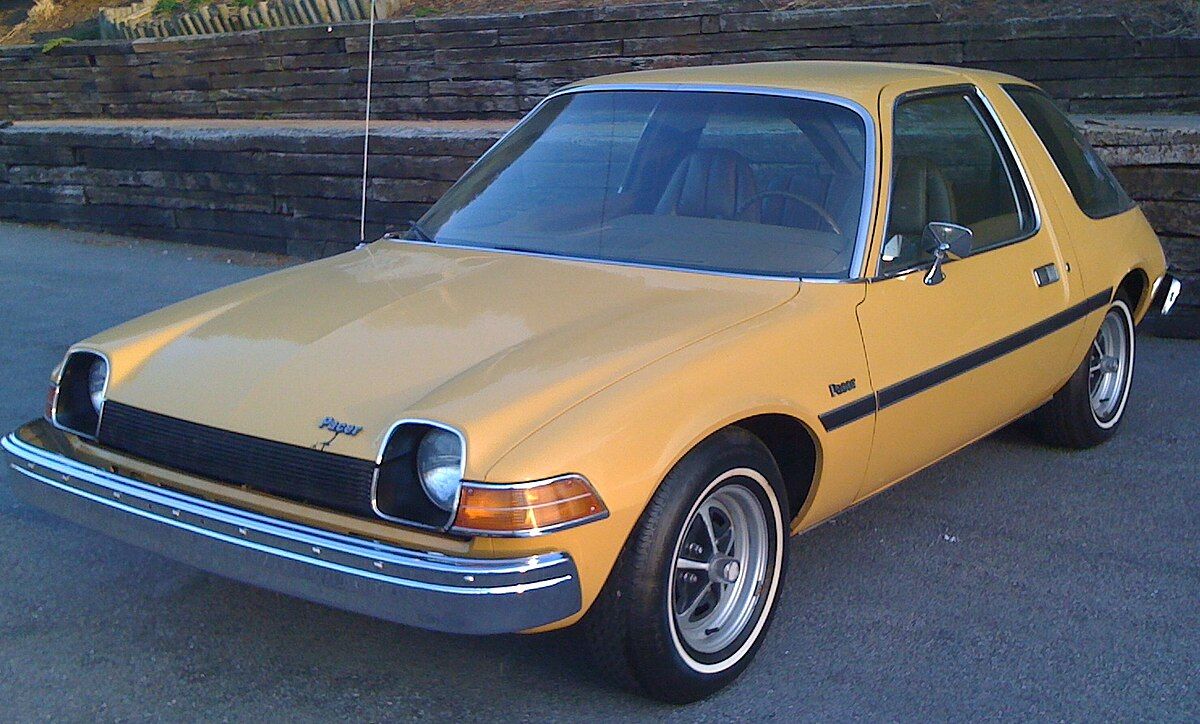
4. **AMC Pacer**When the AMC Pacer first hit the market, it was emphatically “once touted for its innovation and unique styling,” representing a genuinely bold attempt to break away from traditional automotive aesthetics of the period. Boomers might remember it as a fascinating experiment, a vehicle that consciously tried to stand out with its distinctive, expansive glass area and unusually wide stance. The aim was to create an exceptionally spacious and visible cabin, making it a memorable conversation starter wherever it went.
Millennials generally “tend to regard the Pacer as oddly shaped and inefficient, making fun of its bubble-like appearance.” What was once championed as unique is now frequently a source of amusement, or even outright derision, among younger drivers. Its highly unconventional form, initially intended to be a visionary step forward, is now widely viewed as an aesthetic misstep. This perception is further exacerbated by its perceived inefficiency, which significantly detracts from its appeal in an era that values sleek, modern design and practical, economical performance.
The Pacer’s trajectory serves as a stark reminder that not all attempts at radical innovation or groundbreaking design stand the test of time gracefully. As the context explicitly states, “This car’s attempt at breaking the mold is now viewed more as a misstep rather than a mark of innovation” by younger drivers. This illustrates in vivid detail how aesthetic tastes and functional expectations can evolve dramatically across different generations, reshaping what is considered groundbreaking versus merely peculiar.
Read more about: Unpacking the Generational Divide: 14 Classic Boomer Cars Millennials Just Aren’t Craving – And Why

5. **Ford Pinto**Despite its deeply checkered and often troubling past, the Ford Pinto undeniably held a significant and widespread place in the automotive landscape of the 1970s. Boomers “might reminisce about its affordability and practicality during their youth,” often recalling it as an accessible and highly economical choice for countless families and first-time car owners. It was a remarkably common sight on American roads, offering basic, no-frills transportation when new car options were perhaps more limited.
Yet, any lingering nostalgic feelings that Boomers might harbor for the Pinto are almost completely eclipsed for Millennials by the car’s deeply notorious safety record. It “has become notorious for its safety issues, particularly the risk of its fuel tank catching fire upon rear impact.” For younger drivers, this serious and widely publicized design flaw makes the car fundamentally undesirable and, frankly, terrifying; they “see it as dangerous” in a way that modern vehicles are simply not. Safety, for the contemporary driver, is an absolute, non-negotiable prerequisite.
The controversial saga of the Ford Pinto is a powerful and enduring example of how historical product controversies, particularly those involving critical public safety issues, can permanently tarnish a vehicle’s image. This renders it almost entirely unappealing to subsequent generations who prioritize occupant protection and peace of mind above all else. Its deeply troubled past casts such a long shadow that it effectively extinguishes any potential for appreciation among Millennials.
Car Model Information: 1978 Ford Pinto RUNABOUT HATCHBACK
Name: Ford Pinto
Caption: Ford Pinto
Manufacturer: Ford Motor Company
Aka: Mercury Bobcat
Production: September 1970 – July 1980
ModelYears: 1971–1980 (Pinto),1974–1980 (Bobcat)
Assembly: Edison, New Jersey,Milpitas, California
Designer: Robert Eidschun (1968)
Class: Subcompact car
BodyStyle: Sedan (automobile),sedan delivery,station wagon,hatchback
Related: #Mercury Bobcat (1974–1980),Ford Mustang (second generation)
Layout: Front-engine, rear-wheel-drive layout
Chassis: Unibody
Engine: unbulleted list
Abbr: on
Disp: Ford Cologne engine
Transmission: unbulleted list
Wheelbase: 94.0 in
Length: 163 in
Width: 69.4 in
Height: 50 in
Weight: convert
Predecessor: Ford Cortina#Mark II (1966–1970)
Successor: Ford Escort (North America)
Categories: 1980s cars, Articles with short description, Cars discontinued in 1980, Cars introduced in 1970, Commons category link from Wikidata
Summary: The Ford Pinto is a subcompact car that was manufactured and marketed by Ford Motor Company in North America from 1970 until 1980. The Pinto was the first subcompact vehicle produced by Ford in North America.
The Pinto was marketed in three body styles throughout its production: a two-door fastback sedan with a trunk, a three-door hatchback, and a two-door station wagon. Mercury offered rebadged versions of the Pinto as the Mercury Bobcat from 1975 until 1980 (1974–1980 in Canada). Over three million Pintos were produced over its ten-year production run, outproducing the combined totals of its domestic rivals, the Chevrolet Vega and the AMC Gremlin. The Pinto and Mercury Bobcat were produced at Edison Assembly in Edison, New Jersey, St. Thomas Assembly in Southwold, Ontario, and San Jose Assembly in Milpitas, California.
Since the 1970s, the safety reputation of the Pinto has generated controversy. Its fuel-tank design attracted both media and government scrutiny after several deadly fires occurred when the tanks ruptured in rear-end collisions. A subsequent analysis of the overall safety of the Pinto suggested it was comparable to other 1970s subcompact cars. The safety issues surrounding the Pinto and the subsequent response by Ford have been cited widely as business ethics and tort reform case studies.
Get more information about: Ford Pinto
Buying a high-performing used car >>>
Brand: Ford Model: Pinto
Price: $19,000 Mileage: 91,000 mi.
Read more about: Unpacking the Generational Divide: 14 Classic Boomer Cars Millennials Just Aren’t Craving – And Why
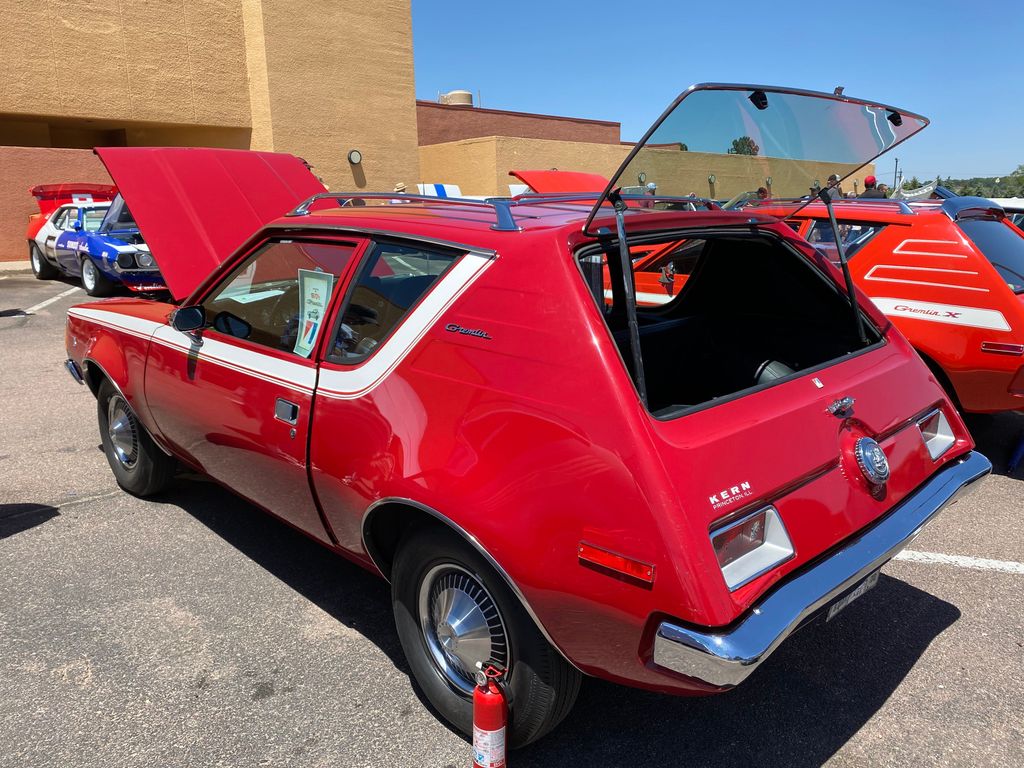
6. **AMC Gremlin**The AMC Gremlin, much like its distinctively styled Pacer sibling, “sports a unique design that boomers view with nostalgia.” For some Baby Boomers, this car might evoke a simpler time, a period when American car manufacturers were seemingly more willing to take significant risks with design, often resulting in vehicles that were undeniably quirky. It was a compact and economical offering that certainly presented something different to the market, appealing to a segment of consumers looking for both affordability and an unconventional, memorable aesthetic.
Millennials, however, largely does not share this warm, nostalgic sentiment for the Gremlin. They “tend to dislike the Gremlin for its unusual aesthetics and less-than-stellar performance metrics.” Its distinctive, almost abruptly chopped-off rear end and its somewhat unusual proportions are frequently seen as visually jarring or awkward, rather than charmingly unique. This aesthetic critique is further compounded by its performance capabilities, which typically failed to impress even in its own era.
The Gremlin stands as another prime example where the adventurous, perhaps even eccentric, design choices from a bygone automotive era are simply too far removed from contemporary tastes and performance standards. Its “unusual aesthetics,” when coupled with a distinct lack of compelling performance, mean that it often becomes an object of lighthearted jokes or ironic amusement rather than a genuine subject of admiration or serious consideration for Millennials.
Read more about: Unpacking the Generational Divide: 14 Classic Boomer Cars Millennials Just Aren’t Craving – And Why
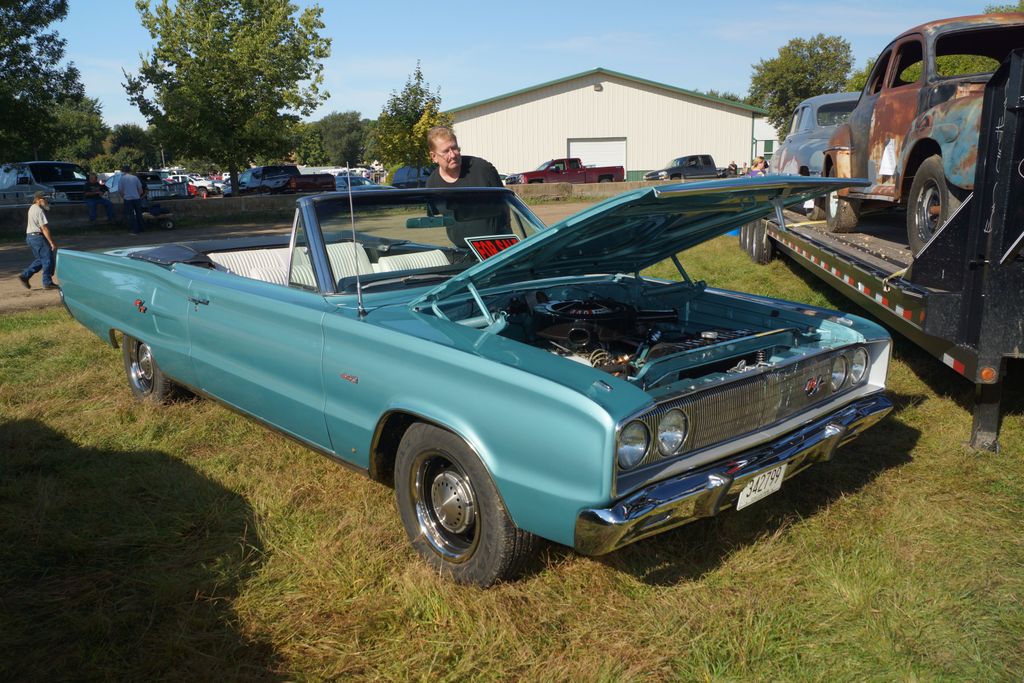
7. **Dodge Coronet**For Baby Boomers, the Dodge Coronet was once widely regarded and appreciated as “a solid, reliable family car.” It represented dependable, no-nonsense transportation, a sturdy vehicle that faithfully served its primary purpose without requiring much fuss or fanfare. Offering ample space and a generally comfortable ride for everyday use, the Coronet was, in its prime, a practical and sensible choice, a workhorse that countless American families relied upon.
Millennials, however, often dismiss the Coronet for its “plain design and large size, which appears out of step with contemporary automotive values of style and efficiency.” The car’s distinctly utilitarian and unexciting aesthetic simply fails to ignite any passion or interest among younger drivers. Furthermore, its significant physical dimensions are now perceived as inherently inefficient and cumbersome in today’s urbanized world where nimbleness, fuel economy, and ease of parking are highly prized.
Car Model Information: 1967 Dodge Coronet Restomod
Name: Dodge Coronet
Caption: 1967 Dodge Coronet R/T
Manufacturer: Dodge
Production: 1949–1959,1965–1976
Class: Full-size
Predecessor: Dodge Custom
Successor: Dodge Dart
Layout: FR layout
Categories: 1950s cars, 1970s cars, All articles with dead external links, All articles with unsourced statements, Articles with dead external links from June 2016
Summary: The Dodge Coronet is an automobile that was marketed by Dodge in seven generations, and shared nameplates with the same bodyshell with varying levels of equipment installed. Introduced as a full-size car in 1949, it was the division’s highest trim line and moved to the lowest level starting in 1955 through 1959. The name was reintroduced on intermediate-sized models from the 1965 until 1976 model years. Muscle car versions were available starting in 1965 with the 383 and 426 wedge cu in (7.0 L) Chrysler RB engine, followed in 1966 by the powerful 426 cu in (7.0 L) Chrysler Hemi. Other performance models included the “Superbee”, and featured, the 383 cu in (6.3 L) Magnum, among other engine options. The nameplate “coronet” is a type of crown worn by royalty.
In the 1980s, the Coronet was used on Dodge models marketed in Colombia.
Get more information about: Dodge Coronet
Buying a high-performing used car >>>
Brand: Dodge Model: Coronet
Price: $46,500 Mileage: 2,818 mi.
Read more about: Boomer Dream Machines: 14 Classic Car Icons Millennials Are Overlooking and Why They’re Missing the Mark
This particular car illustrates how the very definition of “reliable” and “practical” has undergone a profound evolution, alongside dramatic shifts in desired aesthetics and functional expectations. What was once a practical family vehicle is now often seen as an uninspired relic, demonstrating a fundamental divergence in what consumers prioritize in their daily drivers. The Coronet’s straightforward appeal simply doesn’t translate effectively to a generation actively looking for more dynamic and efficient automotive options.

